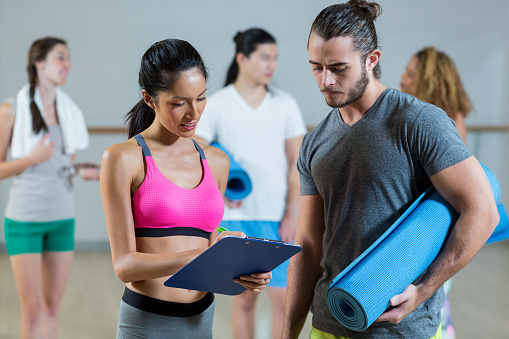
Though stereotypes are dissolving with each generation, some persist – in part, because they are based on real differences between men and women. While some women can and do achieve the upper body strength of some (even very fit) men, the overwhelming majority of males have a natural advantage in this area. Male aesthetic values, the source of which isn’t clear, reinforce this and so they tend to work on the upper body more than some other areas, relative to women’s efforts.
Women, in part out of a desire to be seen as attractive, will focus exercises more on the buttocks and legs. But here they also have a slight natural advantage for some exercises. A woman’s pelvis tilts at a different angle than a man’s. This affects the style and efficiency of squats, for example. Women will benefit by tilting their feet outward with legs further apart, while not needing to squat so low.
Overall, (most) women have less muscle mass than men (though they have additional layers in the stomach) and a higher percentage of body fat on average. As a result, a well-designed female routine focuses less on bulking up, than toning and achieving flexibility. Women are more likely to incur injuries by lifting too much, too soon as they build up.
Men are somewhat less flexible on average, partly due to natural differences in joints, and partly owing to attitude. Men tend more often than women to short-change their warm-up routines, including essential stretching exercises. All these differences (and many more) are a matter of degree, of course. Both men and women can benefit by adapting some aspects of the routines of the opposite sex.
Women are more likely to be more open to trying something new or different, such as yoga or pilates. These focus more on being aware of different body parts, to maximize flexibility and overall fitness. They focus very little on achieving strength, though this is often (in part) a consequence of a good yoga or pilates routine.
For example, several yoga routines focus on balance. But balance is optimized when all the muscles help support the joints and skeleton at correct angles in a dynamic way. That is both the cause and consequence of improved strength in the muscles that help achieve that balance.
Pilates, in particular, is a coordinated system for achieving better strength and posture, and breathing by using one to aid the other. It concentrates more on controlling muscle groups than building them. Both yoga and pilates and many other systems popularized in the West in the last 20 years or so focus on the integration of mind and body, one helping the other. Both systems are helpful as therapy for certain spine and joint problems. While men and women will continue to lay more importance on some exercise values – and hence routines – than on others, both can benefit by peeking over the fence to see how the other half lives.
